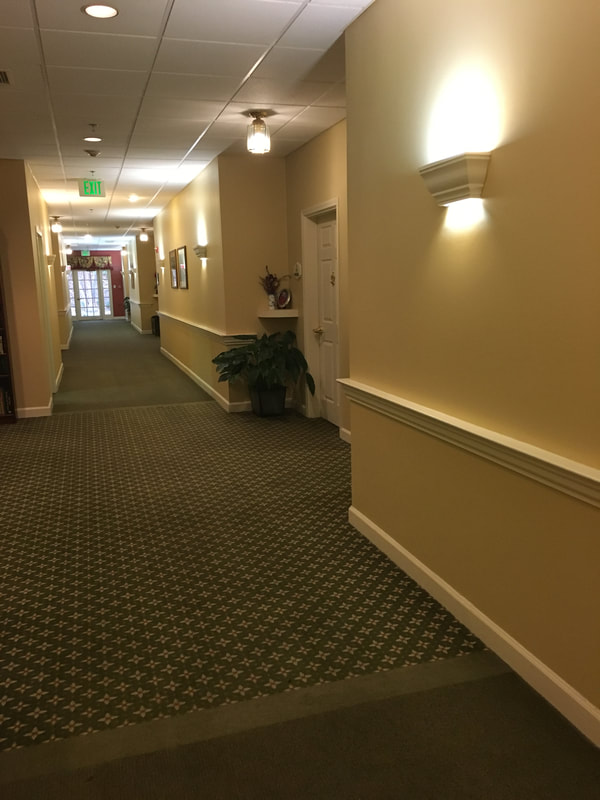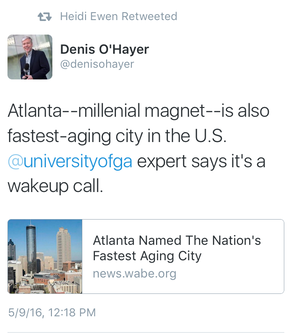 Word cloud from Curriculum Vita
Word cloud from Curriculum Vita
Environment, Housing, and Relocation
The majority of my research on housing and relocation uses the theoretical models of Person-Environment Fit and the Push-Pull model of relocation. (P–E fit) is defined as the degree to which individual and environmental characteristics match.
My combined research and teaching agenda reflects a commitment to the biopsychosocial aspects of aging, stress & adaptation, housing, and relocation decision-making. I frame my teaching and research primarily from an interdisciplinary perspective largely built upon social psychology experimental paradigms. The majority of my scholarly work is on aging and environment, particularly aging-in-place and relocation decision-making, stress, and adaptation among older adults using a mixed methods research designs. I have analyzed data with basic univariate statistics, advanced multivariate statistics, and case study approaches.
The key findings from my recent studies are older women whose expectations of relocation were incongruent with their relocation experiences were more “withdrawn” six months after the move and were at greater risk of not acclimating socially within the community (Ewen, 2006; Ewen & Chahal, 2013). Second, the majority of women did not anticipate resident deaths within the community, which resulted in increased physiological stress reactivity (measured via salivary cortisol) and increased dissatisfaction with the facility management (manuscript in process; [Ewen, 2009]). Collaborations with a colleague on bereavement and disenfranchised grief supported my findings on subsequent negative outcomes (Anderson & Ewen, 2011; Anderson, Ewen, & Miles, 2010). Perceptions of relocation as a stressor varied among women and the acclimation process was influenced by events within the facility and in family relationships outside of the facility (Ewen & Kinney, 2013). Third, a significant proportion of women relocated to be nearer a family member who needed care. As such, supportive housing and onsite provisions enabled them to spend more time in caregiving duties (Ewen & Chahal, 2013).
Recent (Select) Publications
Gerontology Education
A second line of research is on Gerontology Doctoral Education and I am co-PI on a project entitled the Gerontology Education Longitudinal Study (GELS) that began in 2002 with a pilot study of students from each of the seven programs. In 2006 the full project was launched and students, alumni, and faculty have been surveyed each year. Results of the study indicate students and graduates falling into distinct clusters of careers, one of which is applied work with older adults and agencies, ranging from local areas to international organizations. As such, we have learned that there are implications for increased need for stewards of the discipline to translate research into practice, particularly in nursing, social work, and public health. Many of the programs are not equipped to prepare such scholar/practitioners and this area requires additional investigation, principally among alumni who are actively working in these sectors to identify areas in which specific training has, or would have, helped them in their careers.
The majority of my research on housing and relocation uses the theoretical models of Person-Environment Fit and the Push-Pull model of relocation. (P–E fit) is defined as the degree to which individual and environmental characteristics match.
My combined research and teaching agenda reflects a commitment to the biopsychosocial aspects of aging, stress & adaptation, housing, and relocation decision-making. I frame my teaching and research primarily from an interdisciplinary perspective largely built upon social psychology experimental paradigms. The majority of my scholarly work is on aging and environment, particularly aging-in-place and relocation decision-making, stress, and adaptation among older adults using a mixed methods research designs. I have analyzed data with basic univariate statistics, advanced multivariate statistics, and case study approaches.
The key findings from my recent studies are older women whose expectations of relocation were incongruent with their relocation experiences were more “withdrawn” six months after the move and were at greater risk of not acclimating socially within the community (Ewen, 2006; Ewen & Chahal, 2013). Second, the majority of women did not anticipate resident deaths within the community, which resulted in increased physiological stress reactivity (measured via salivary cortisol) and increased dissatisfaction with the facility management (manuscript in process; [Ewen, 2009]). Collaborations with a colleague on bereavement and disenfranchised grief supported my findings on subsequent negative outcomes (Anderson & Ewen, 2011; Anderson, Ewen, & Miles, 2010). Perceptions of relocation as a stressor varied among women and the acclimation process was influenced by events within the facility and in family relationships outside of the facility (Ewen & Kinney, 2013). Third, a significant proportion of women relocated to be nearer a family member who needed care. As such, supportive housing and onsite provisions enabled them to spend more time in caregiving duties (Ewen & Chahal, 2013).
Recent (Select) Publications
- Ewen, H.H. (2020). Assessing stress in relocation using biopsychosocial methods. SAGE Research Methods Cases in Medicine and Health. DOI: 10.4135/978159707274.
- Ewen.H.H. & Carswell, A.T. (2019). Differences in conventional and seniors-oriented apartment management. Facilities, 37 (3-4), 157-167.
- Ewen, H.H., Emerson, K.G., Washington, T.R., Carswell, A.T., & Smith, M.L. (2017). Characteristics of HCBS users living in service-rich, service-poor senior housing. Housing & Society. DOI: 10.1080/08882746.2017.1389577
- Ewen, H.H., Washington, T., Emerson, K.G., Carswell, A.T., and Smith, M.L. (2017). Variation in older adult characteristics by residence type and use of home- and community- based services. International Journal of Environmental Research and Public Health, 14 (3), 330. DOI: 10.3390/ijerph14030330
- Ewen, H.H., Lewis, D.C., Carswell, A.T., Emerson, K.G., Washington,T., and Smith, M.L. (2017). A Model for Aging in Place for in Senior Housing Communities. Journal of Housing for the Elderly, 31 (1), 1-13.
- Ewen, H.H., Nikzad-Terhune, K.A., and Chahal, J.K. (2016). The Rote Administrative Approach to Death in Senior Housing: Using the Other Door. Geriatric Nursing, 37(5), 360-365. DOI: 10.1016/j.gerinurse.2016.05.003.
- Chahal, J.K., Ewen, H.H., Anderson, K.A., and Miles, T. (2015). Institutional Bereavement Care for Fictive Kin: Staff Grief in CCRCs. Journal of the American Medical Directors Association, 16(10), 892-895. DOI: 0.1016/j.jamda.2015.06.
- Ewen, H.H., Hahn, S.J., Erickson, M.A. and Krout, J.A. (2014). Aging in Place or Relocation? Plans of Community Dwelling Older Adults. Journal of Housing for the Elderly, 28, 1-22. DOI: 10.1080/07263893.2014.930366.
- Ewen, H.H. and Chahal, J.K. (2013). Women’s Experiences of a Late-Life Stressor: Relocation to Congregate Senior Housing. Journal of Housing for the Elderly.
- Ewen, H.H. & Kinney, J.M. (2013). Application of the Model of Allostasis to Older Women’s Relocation and Adaptation to Senior Housing. Submitted to the Biological Research in Nursing. 23 pages.
- Erickson, M.A., Robison, J., Ewen, H.H., and Krout, J.A. (2006). Should I Stay or Should I Go? Moving Plans of Older Adults. Journal of Housing for the Elderly, 20 (3): 5-22.
- Gaugler, J.E. and Ewen, H.H. (2005). Building relationships in residential long-term care: Determinants of Staff Attitudes Toward Family Members in Residential Long-Term Care. Journal of Gerontological Nursing, 31(9), 19-25.
- Gaugler, J. E., Anderson, K. A., & Holmes, H. H. (2005). Family-Based Intervention in Residential Long-Term Care. Marriage & Family Review, 37, 45-62. Simultaneously published in Caputo, R. K. (Ed.,) Challenges of Aging on U.S. Families. Haworth Press
- Gaugler, J. E. and Holmes, H. H. (2003). Families and the Institutionalization Experience: Adaptation and Intervention. The Clinical Psychologist, 7 (1), 32-43.
- Krout, J., Moen, P., Holmes, H., Oggins, J., and Bowen, N. (2002). Reasons for Relocation to a Continuing Care Retirement Community. Journal of Applied Gerontology, 21 (2), 236-256.
- Krout, J., Oggins, J. & Holmes, H. (2000). Patterns of Service Use in a Continuing Care Retirement Community. The Gerontologist, 40 (6). 698-705.
Gerontology Education
A second line of research is on Gerontology Doctoral Education and I am co-PI on a project entitled the Gerontology Education Longitudinal Study (GELS) that began in 2002 with a pilot study of students from each of the seven programs. In 2006 the full project was launched and students, alumni, and faculty have been surveyed each year. Results of the study indicate students and graduates falling into distinct clusters of careers, one of which is applied work with older adults and agencies, ranging from local areas to international organizations. As such, we have learned that there are implications for increased need for stewards of the discipline to translate research into practice, particularly in nursing, social work, and public health. Many of the programs are not equipped to prepare such scholar/practitioners and this area requires additional investigation, principally among alumni who are actively working in these sectors to identify areas in which specific training has, or would have, helped them in their careers.
- Kaskie, B., Carr, D.C., and Ewen, H.H. (2017). What does the emergence of a critical mass of doctoral gerontologists mean to the field? Gerontology and Geriatrics Education. DOI: 10.1080/02701960.2017.1311880.
- VanDussen, D., Leson, S., Emerick, E., Voytek, J., and Ewen, H.H. (2015). Assessing Needs for Gerontological Education in Urban and Rural Areas. Journal of Education and Training Studies, 4(1), 55-60.
- Dassel, K.B., Ewen, H.H., Carr, D.C., Manning, L., Leach, C.R., and Fitzgerald, K. (2014). What Can I Do With a Gerontology Degree?: Expanding Your Options. Journal of Gerontology and Geriatrics Education, DOI: 10.1080/02701960.2013.87901
- Ewen, H.H. & Brown, P.S. (2012). Examining Undergraduate Attitudes Among Students Enrolled in Introductory Gerontology Courses on Sexual Behaviors of Older Adults. American Journal of Sexuality Education.
- Ewen, H.H., Carr, D.C., & Reynolds, C.J. (2012). Tomorrow Belongs to Those Who Prepare for it Today: Gerontology Doctoral Students’ Aspirations. Journal of Gerontology and Geriatrics Education. 22 pages.
- Mwangi, S.M., Yamashita, T., Ewen, H.H., Manning, L.K., & Kunkel, S.R. (2012). Globalization of Gerontology Education: Current Practices and Perceptions for Graduate Gerontology Education in the United States. Journal of Gerontology and Geriatrics Education.
- Ewen, H.H., Rowles, G.D., & Watkins, J.F. (2011). Assessing Professional and Personal Development in Contemporary Doctoral Education. Educational Gerontology: An International Journal . 22 pages.



















